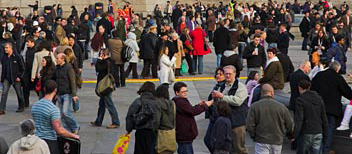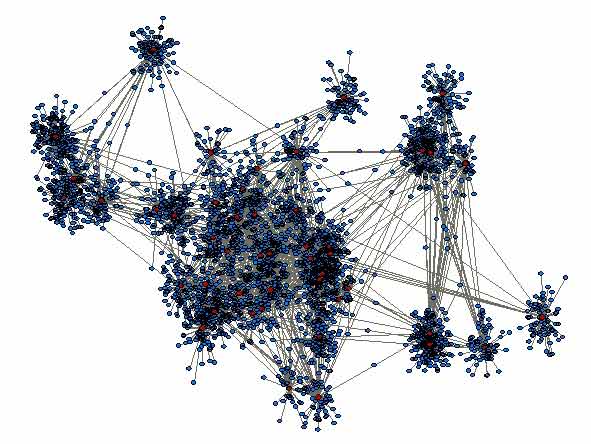Social Networks

"What a tangled web we weave ... "
Generally, very little is known about the mixing patterns that facilitate the transmission of diseases. This is particularly so for diseases which spread through social contact, whether it is via airborne droplets or through closer contact, such as touch. Influenza, smallpox, the common cold, SARS, and MRSA are all infections that spread through social interactions. Quantifying social networks, from the viewpoint of infections, is therefore important to predict the spread of possible pandemic infections and to predict the effectiveness of various social control measures.
The number of people (degree) encountered by an infectious person during a day is important for disease transmission, and at the scale of the population can ultimately determine whether an outbreak occurs. Most mathematical models of infection include this measure, yet very little is known about it for human populations and societies. In addition, how frequently individuals see people (contacts) during the period for which they are infectious, and the relationship between these contacts, also determine the rate at which a disease can spread though a group of friends, a school or workplace, or even a city or country.

We are attempting to quantify human social interactions from the perspective of transmission opportunities, though the use of diary- and questionnaire-based surveys. To do this we need information from as many people as possible. If you would like to help, we would be very grateful if you could find time to complete a questionnaire, detailing all your social interactions in a day (all information will be anonymous and treated as confidential).
Questionnaires are available to print here: singledaycontactdiary.pdf
Funding:
NIH
People involved with this work are:
Jon Read
Ken Eames
Matt Keeling
Other people involved:
John Edmunds
(Health Protection Agency)


